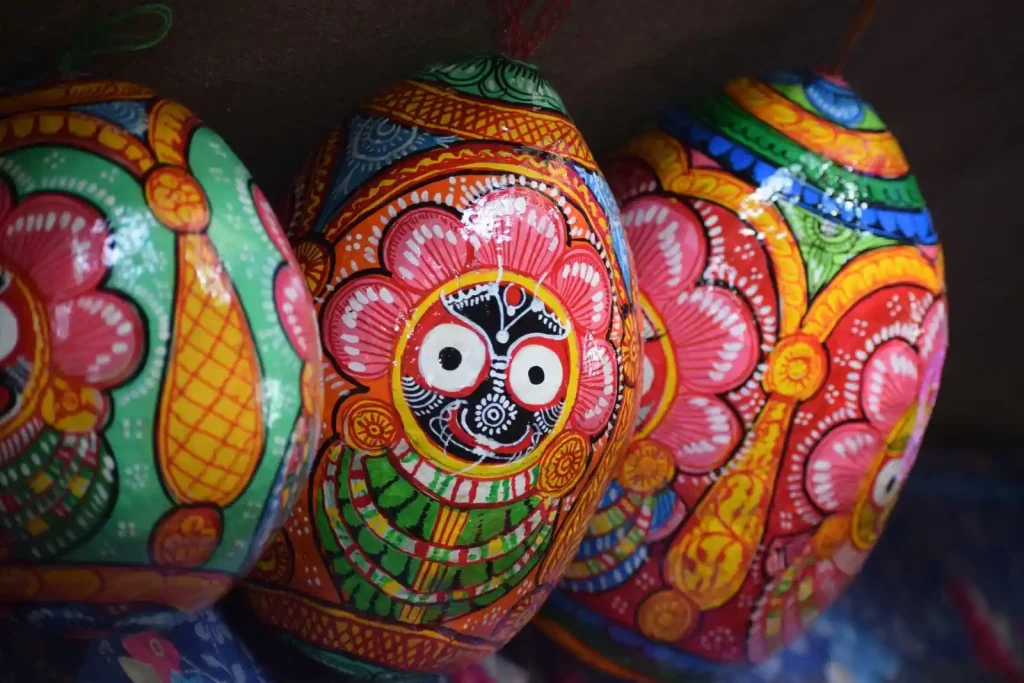Odia literature is a genre of Indian writing that has its roots mainly in the state of Odisha and is mostly produced in the Odia language. Mostly made up of Tadbhava terms with Sanskrit (Tatsama) elements, the modern Odia language is primarily composed of word and phrase combinations from Desaja, English, Hindustani (which is primarily Hindi), and Urdu. The earliest known written records in the language are more than 1,000 years old. Originally published on August 4, 1866, Utkala Deepika appears to have been the first Odia publication. This blog will talk about the details of the Odia literature, which is also an important topic for the aspirants of UPSC and other competitive exams like SSC, EPFO, etc. Continue reading to learn more!
Contents
The Origin of Odia Literature
The 12th-century Shri Jagannath Bhajanamala, a compilation of devotional songs celebrating Lord Jagannath, is the oldest known piece of Odia literature. But Odia literature really took off in the 14th century, mostly in the form of devotional and religious writings. Odia literature flourished in the sixteenth century. It had been greatly enhanced by the five saint poets (Panchasakha). Their names were Jagannath Das, Balaram Das, Yasovanta Das, Achyutanda Das, and Ananta Das. These cherished Panchasakhas represent a unique group that supported Bhakti as the ultimate path to realizing God.

Phases of Odia Literature
Odia literature has evolved over time. Each phase was important in the history of it. Odia. It went through five phases, which are:
- 800 AD to around 1300 AD – Old Odia
- 1300 AD to around 1500 AD – Early Medieval Odia
- 1500 AD to around 1700 AD – Medieval Odia
- 1700 AD to around 1850 AD – Late Medieval Odia
- 1850 AD to present – Modern Odia
The Classical Period of Odia Literature
A number of significant poets and writers came to status during the 14th to 17th centuries, which is known as the classical period of Odia literature. The Bhakti movement in particular had a major impact on religious themes during this time. Among the most famous odia literatures from this era are:
Sarala Mahabharata by Sarala Das: One of the earliest works of Odia literature is Sarala Das’s Sarala Mahabharata, which is a telling of the Mahabharata.
Chandi Purana by Mahakavi Jagannath Das: It is a lyrical composition that glorifies Goddess Chandi and is considered a significant work in Odia literature.
Ramayana by Balarama Das: The Ramayana, translated into Odia by Balarama Das, is a fundamental work of classical Odia literature.
The Rebirth of Odia Literature
Odia literature saw a rebirth in the 19th and early 20th centuries, with a shift towards modern themes and forms. Fiction, including novels and short stories, flourished during this time. During this period, a number of important individuals made contributions that helped shape modern Odia literature. These include:
Fakir Mohan Senapati: Widely considered the founder of modern Odia literature, Fakir Mohan brought social issues and realism to Odia literature with his works such as Chha Mana Atha Guntha.
Radhanath Ray: Ray, who is renowned for his poetic genius, captured the political and social situation of his time in his works. Poetry by him, such as Chilika and Kedar Gouri, is praised for its wonderful lyricism.
Madhusudan Rao: An innovative author of children’s books, his creations were important in bringing Odia literature to a younger audience.
Also Read: Odissi Dance: History, Features and Facts
Fiction and drama in Odia literature
One well-liked Odia theatrical genre that flourished in the rural areas of Odisha is folk opera. Though it is no longer profitable, this innovative theater made a name for itself in the 1960s, thanks to the efforts of Manoranjan Das, whose imaginative style helped to start a small theater movement.
- Bijay Mishra, Biswajit Das, Prasanna Das, Ramesh Prasad Panigrahi, Ratnakar Chaini, and Mallick were the people to continue the tradition.
- Tripathy is sometimes referred to as the queen of Odia drama and is widely acknowledged for his contribution to the development and creation of the wildly successful and thought-provoking folk opera.
- Four classic Greek tragedies have been adapted into Odia by Ananta Charan Sukla, and it looks to be a success.
Some Famous Odia Literature Books
A number of well-known authors of Odia literature have written books that are very important to the field of Odia literature. Below is a list of books that are mentioned:
- Jakhya by Kahnu Charana Mohanty
- Bana Gahana Tale by Kahnu Charana Mohanty
- Nilas Ra Apurba Abhijana by Bijaya Laxmi Mohanty
- Janmashtami Jatindra by Mohan Mohanty
- Yajnaseni – The Story of Draupadi by Pratibha Ray
- RayAmruta Phala by Manoj Das
The Impact of Odia Literature on Indian Literature
Odia literature has made an important addition to the larger field of Indian literature, thanks to its rich tradition and wide range of themes. Odia’s writings have been translated into many languages, reaching a national audience with their local tales. Other regional literatures in India have been impacted by Odia literature’s emphasis on social realism, folklore, and mythology.
Recent Posts
| Bharatanatyam Dance | Gandhara Art: Features and History |
| Trinity Laban Conservatoire of Music | Gandhara Art: Features, History, Themes & More |
| Amaravati Art | Male Torso Sculpture |
FAQs
Senapati is known as the father of Odia literature. He dedicated his life to the progress of Odia language.
Regarded as the founder of modern Odia literature, Fakir Mohan Senapati is among the most well-known and significant poets in the language.
Bodha Dayini is said to be the first magazine in Odisha. It was published in 1861.
This was all about the “Odia Literature”. For more such informative blogs, check out our UPSC Exams Section and Study Material Section, or you can learn more about us by visiting our Indian exams page.
 One app for all your study abroad needs
One app for all your study abroad needs














